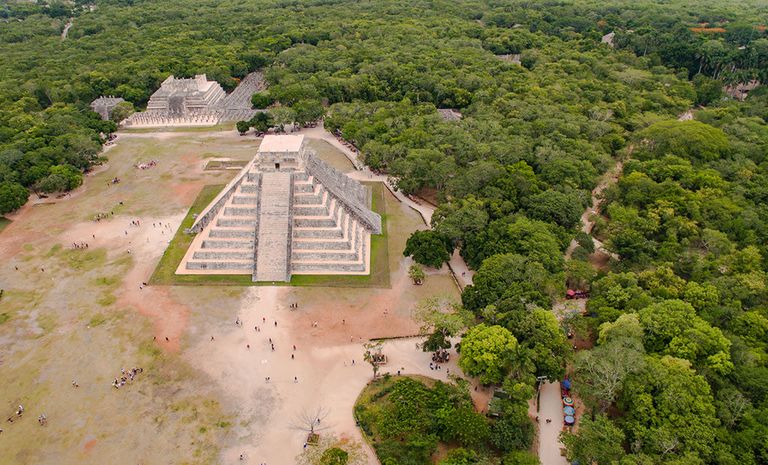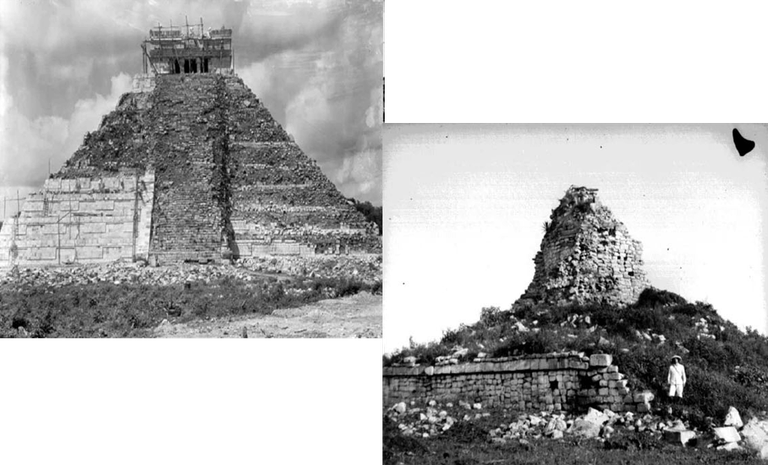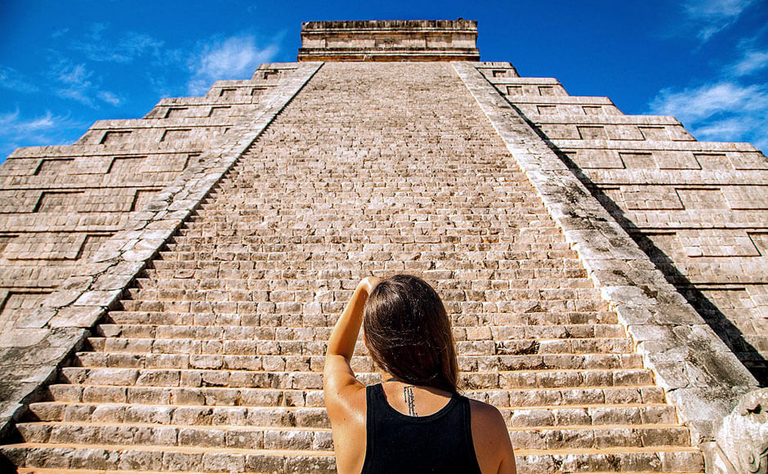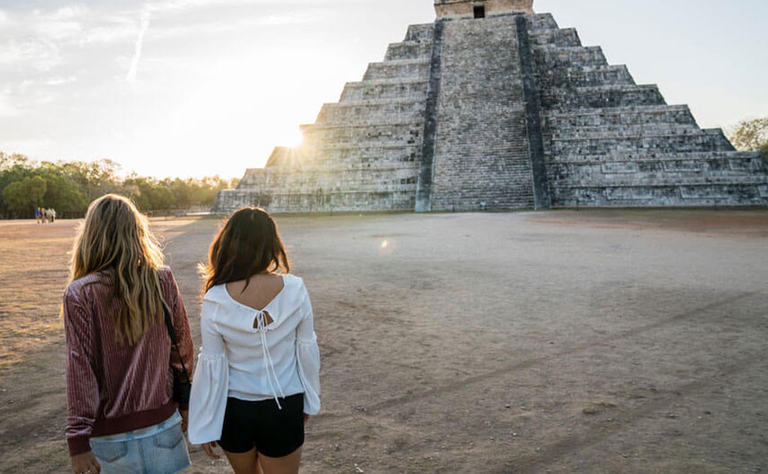Chichén Itzá, a wonder of the world, is the quintessential Mayan archaeological site.

Chichén Itzá (on the edge of the well where the Sages of Water live in the Mayan language) is an important Mayan archaeological site located in Mexico, in the north of the Yucatán Peninsula.
The city reached its peak during the Epiclassic Mayan period. The ruins cover an area of approximately 3 km².
The complex containing the famous Mayan pyramid was included on the UNESCO World Heritage List in 1988; In 2007, he was proclaimed "one of the Seven Wonders of the Modern World" in a controversial competition.
Chichén Itzá is undoubtedly one of the most famous archaeological sites in the world: every day, hundreds of tourists risk their lives trying to reach the top of the Castillo (also known as the Pyramid of Kukulcán), climbing the 91 unscathed steps.
The four sides have a total of 91 steps, which, including the top platform, add up to 265.
Any guide to Yucatán mentions the beauty and charm of this archaeological site, and talks about the treacherous stairs of the Castle, and the endless ball games that ended with the death of the winners (or the losers... it's still not clear...).

During the spring and autumn equinoxes, a fascinating phenomenon occurs: a shadow resembling a feathered serpent forms on the steps.
Another attraction is the fronton court, the largest and most impressive in all of Mexico.
The rules of the ball game are not very clear: they have probably changed over the years.
The Sacred Cenote is another attraction in the archaeological zone.
This cenote is an impressive natural sinkhole approximately 60 m in diameter and 35 m deep.
In the early 1900s, Edward Thompson, a Harvard professor and US consult to Yucatán, purchased the area where the ruins now stand. I have dredged the cenote, revealing numerous artifacts, jewelry, and bones.

There are thirty visible structures that provide tangible evidence of Mayan splendor. With the Temple of Kukulcán, its most important building, the Chichén Itzá area is on the list to become one of the New Seven Wonders of the World. Mexico is arguably one of the most beautiful countries in the world, cherished and beloved for its many aspects. The northern central highlands are home to the driest and most impervious areas, the capital, Mexico City, at 2,240 meters above sea level, the rugged coasts of the Baja California Peninsula and the white beaches of Yucatán, the impenetrable Chapas forests, and the majestic volcanoes: all different but equally fascinating landscapes.
Then there are the historical and cultural aspects that transcend time and space, thanks to the great civilizations of the Mayans and Aztecs, which still amaze us today with the level of knowledge achieved and the beauty of their buildings and art. An emblematic testament to Mayan splendor is the archaeological site of Chichén Itzá, which is on the list of sites to become one of the New Seven Wonders of the World and includes some thirty visible structures.
The first complex that comes into view upon entering is the Ball Court, a space formed by a rectangle delimited by two high parallel walls adorned with bas-reliefs depicting scenes of games and sacrifice. The most important building is the Temple of Kukulcán, the famous nine-story, square-shaped pyramid, 17 meters high, topped by a two-room temple where a statue of Chac-Mool and the stone jaguar throne were found. The Temple is surrounded by a gallery and a portico, the main entrance of which is marked by two serpent-shaped columns.
The pyramid is linked to sun worship and astronomical observation, as evidenced by the four steps, which, composed of 364 steps and added to the upper platform, represent 365, like the days of the solar year. The pyramid's nine floors, which give rise to 18 elements, corresponding to the months of the Aztec calendar, are also illustrative. The monument, in addition to being a place of worship, functioned as a giant sundial, and nothing is more exciting than the spectacle it offers during the spring solstice, when the pyramid's exact position aligned with the sun creates a row of triangular shadows that descend along the steps, representing a serpent that, throughout the day, descends from the temple to the base of the pyramid.
Opposite are the Complex of a Thousand Columns and the Temple of the Warriors, with stone columns formed by square or round shafts, often carved in bas-relief. Walking through this area is to discover suggestions around every corner, to imagine the precision with which these works were created, to delve into paths full of enigmas that take us back to the pre-Columbian world, to a true wonder.
Chichén Itzá is a well-known archaeological site, even more so after being selected as one of the New7Wonders of the World on July 7, 2007.



Comments
Post a Comment